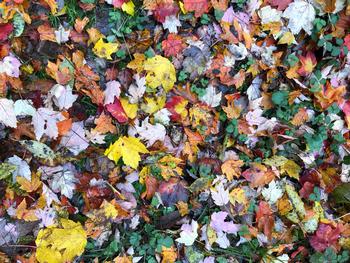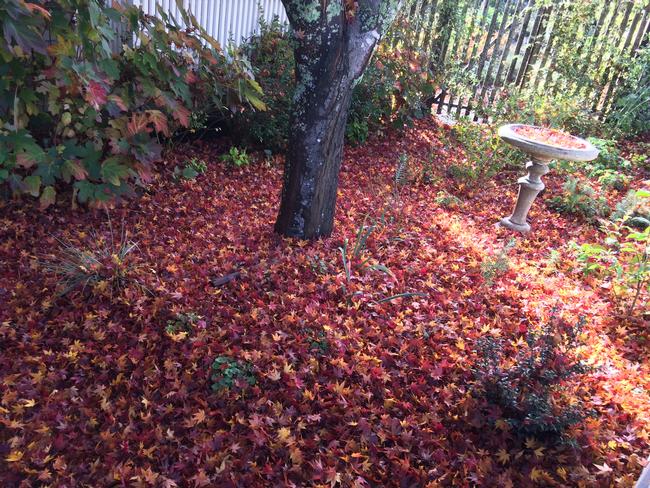What to do with fallen leaves
There’s nothing like the glowing presence of autumn colors, each brilliant red, orange, and yellow leaf backlit by the sun. If you take a walk in a forest, you'll see leaf layers several inches deep around trees and bushes. Fallen leaves have a complex relationship with trees and nature, providing many benefits which can be reproduced to some extent in our gardens.
The bounty of leaves that create a nutritious blanket for the soil can be a conundrum for gardeners because dried leaf litter can also pose a fire risk. We all are working to create defensible space in our landscapes to protect our homes from wildfire. The effort to clear the combustible material can include the removal of this valuable nutritive blanket.
What’s a gardener to do?

- When the tree drops its leaves or needles, do nothing.
- Water trickling through the leaf layer carries essential nutrients such as carbon, phosphorus, nitrogen, and other inorganic compounds into the soil.
- Some creatures use leaf litter to insulate themselves from winter's chill, while others, such as earthworms, feed on the litter, breaking it into smaller pieces.
- Leaves will decompose naturally, feeding soil organisms and eventually becoming compost.
- This layer protects soil from rain and wind erosion and helps prevent weeds and unwanted plants from sprouting.
Compost them:
- Leverage the nutritive value of your dead leaves by composting them.
- Simply pile the leaves on the ground in an area of your yard at least 30 feet from your home and away from other vegetation.
- This allows them to break down without being a fire hazard.
Spread them on the lawn:
- A light covering of leaves on the surface of the lawn can simply be shredded with your lawn mower and left in place.
- They will decompose rapidly and add valuable nitrogen and organic matter to the soil.
- If the leaf layer becomes too thick, rake them up for your compost pile.
Stay fire-smart
Be sure to remove fallen leaves and other debris within five feet of your home and other structures or decks. If you can accommodate a compost pile in an extended reduced-fuel area, you can still use the valuable leaves in your garden. Learn more about fire-smart landscaping.
Strategies for tough leaves
The types and volumes of leaves can aid in deciding what to do with nature’s bounty of leaves.
Hard, waxy leaves like magnolia and live oak leaves break down slowly and benefit from shredding or weed whacking.
Conserve energy
If the thought of raking leaves away from your home for fire safety is more than you can bear, consider using an electric reverse blower. This leaf vacuum has a bag attached so you can collect your leaves with little effort.
